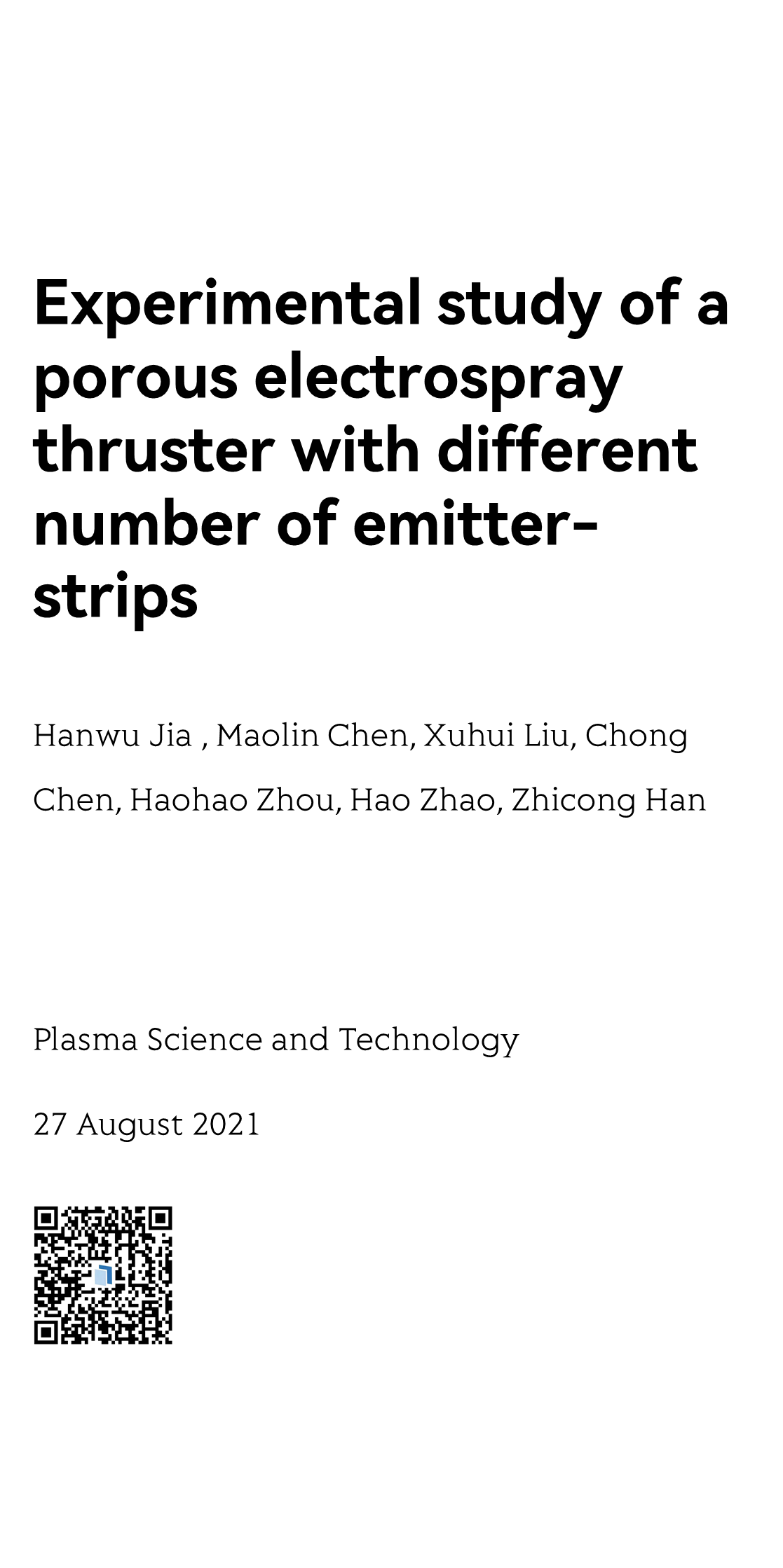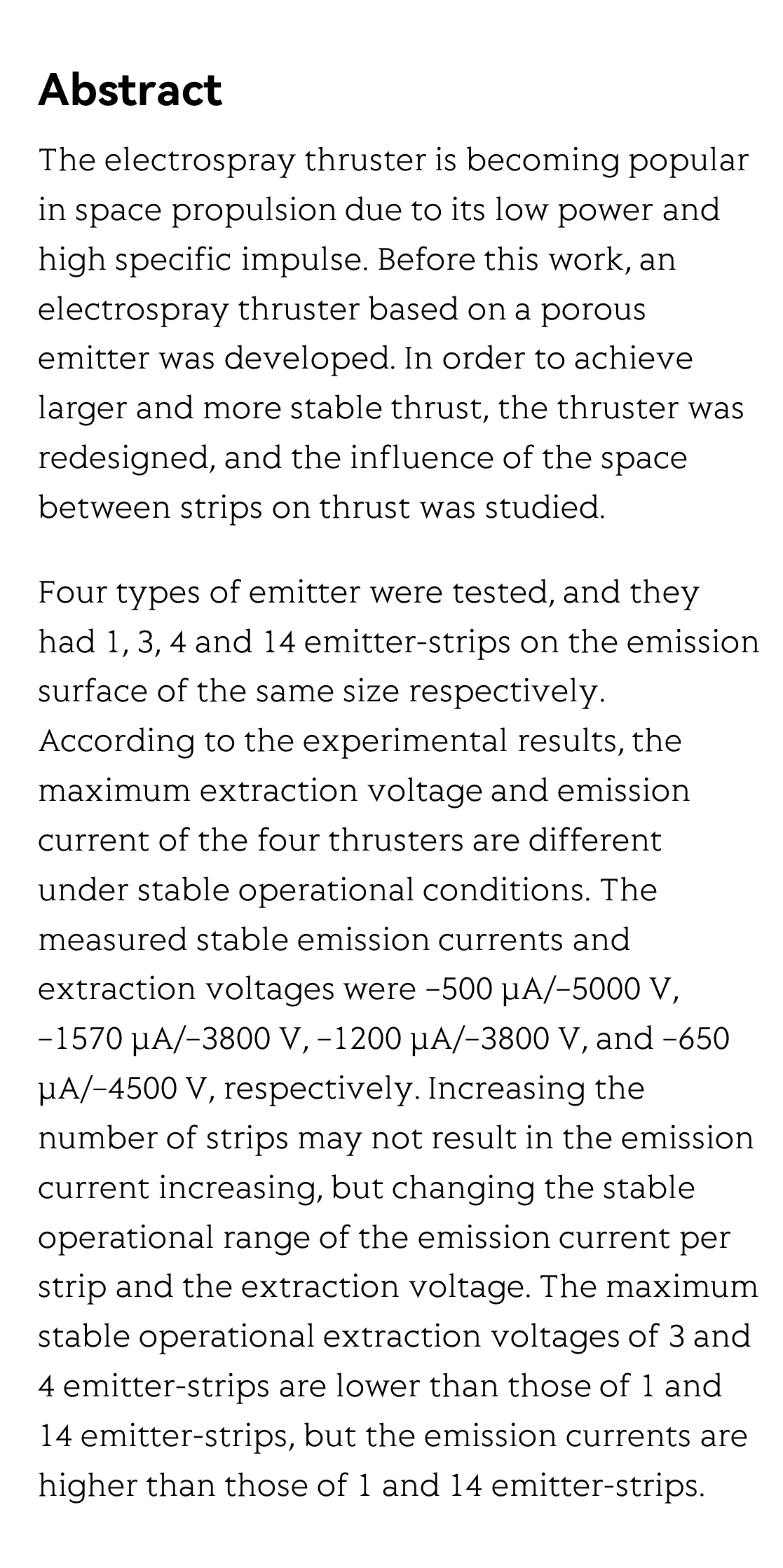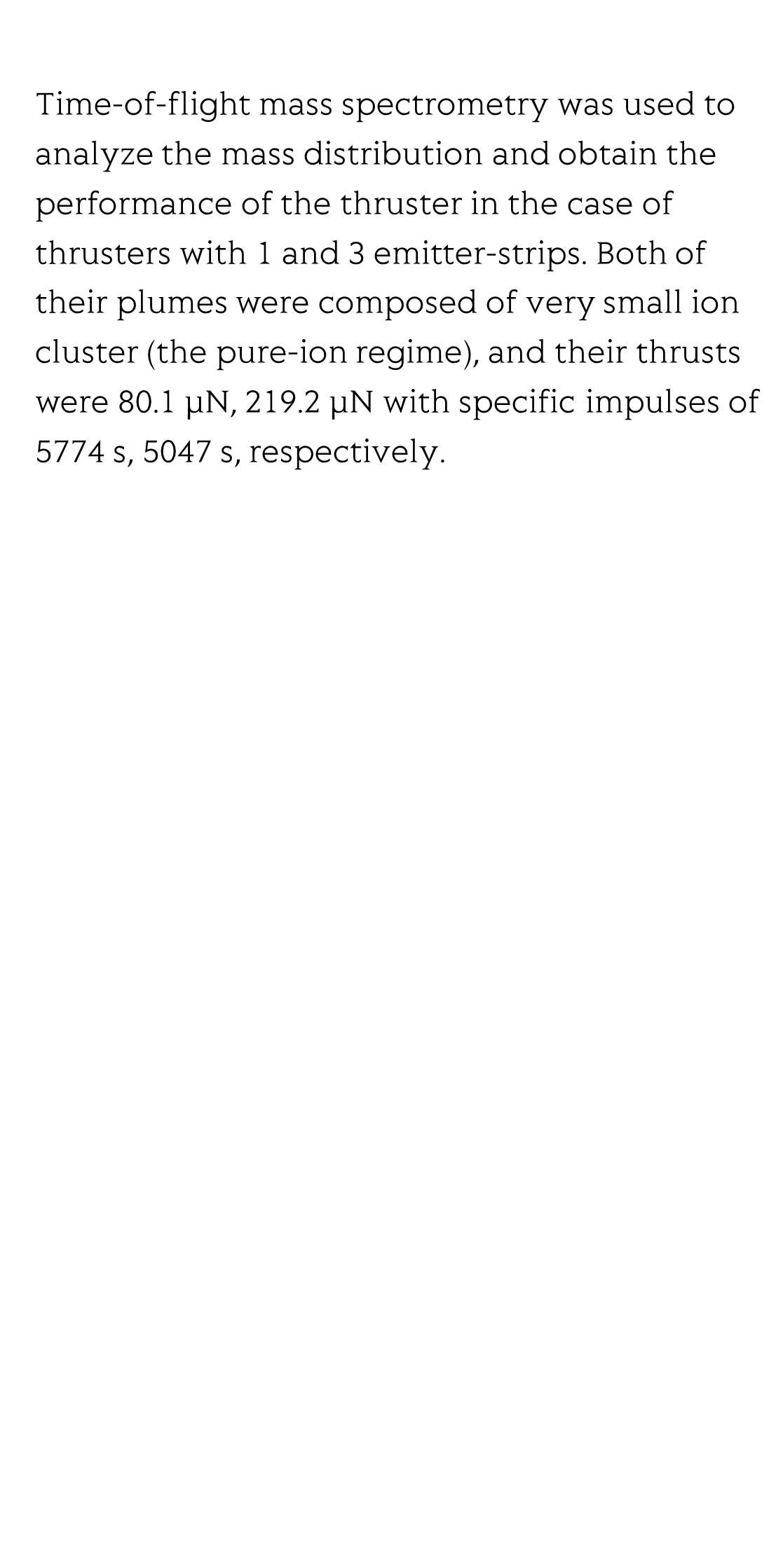(Peer-Reviewed) Experimental study of a porous electrospray thruster with different number of emitter-strips
Hanwu Jia 贾翰武 ¹, Maolin Chen 陈茂林 ¹, Xuhui Liu 刘旭辉 ², Chong Chen 陈冲 ¹, Haohao Zhou 周浩浩 ³, Hao Zhao 赵豪 ¹, Zhicong Han 韩志聪 ¹
¹ Combustion, Internal Flow and Thermal-Structure Laboratory, Northwestern Polytechnical University, Xi'an 710072, People's Republic of China
中华人民共和国 西安 西北工业大学燃烧热结构与内流场重点实验室
² Beijing institute of Control Engineering, Beijing 100190, People's Republic of China
中华人民共和国 北京 北京控制工程研究所
³ Aircraft Design Institute of AVIC, Xi'an 710089, People's Republic of China
中华人民共和国 西安 西安飞机设计研究所
Plasma Science and Technology
, 2021-08-27
Abstract
The electrospray thruster is becoming popular in space propulsion due to its low power and high specific impulse. Before this work, an electrospray thruster based on a porous emitter was developed. In order to achieve larger and more stable thrust, the thruster was redesigned, and the influence of the space between strips on thrust was studied.
Four types of emitter were tested, and they had 1, 3, 4 and 14 emitter-strips on the emission surface of the same size respectively. According to the experimental results, the maximum extraction voltage and emission current of the four thrusters are different under stable operational conditions. The measured stable emission currents and extraction voltages were −500 μA/−5000 V, −1570 μA/−3800 V, −1200 μA/−3800 V, and −650 μA/−4500 V, respectively. Increasing the number of strips may not result in the emission current increasing, but changing the stable operational range of the emission current per strip and the extraction voltage. The maximum stable operational extraction voltages of 3 and 4 emitter-strips are lower than those of 1 and 14 emitter-strips, but the emission currents are higher than those of 1 and 14 emitter-strips.
Time-of-flight mass spectrometry was used to analyze the mass distribution and obtain the performance of the thruster in the case of thrusters with 1 and 3 emitter-strips. Both of their plumes were composed of very small ion cluster (the pure-ion regime), and their thrusts were 80.1 μN, 219.2 μN with specific impulses of 5774 s, 5047 s, respectively.
Flicker minimization in power-saving displays enabled by measurement of difference in flexoelectric coefficients and displacement-current in positive dielectric anisotropy liquid crystals
Junho Jung, HaYoung Jung, GyuRi Choi, HanByeol Park, Sun-Mi Park, Ki-Sun Kwon, Heui-Seok Jin, Dong-Jin Lee, Hoon Jeong, JeongKi Park, Byeong Koo Kim, Seung Hee Lee, MinSu Kim
Opto-Electronic Advances
2025-09-25
Dual-frequency angular-multiplexed fringe projection profilometry with deep learning: breaking hardware limits for ultra-high-speed 3D imaging
Wenwu Chen, Yifan Liu, Shijie Feng, Wei Yin, Jiaming Qian, Yixuan Li, Hang Zhang, Maciej Trusiak, Malgorzata Kujawinska, Qian Chen, Chao Zuo
Opto-Electronic Advances
2025-09-25





